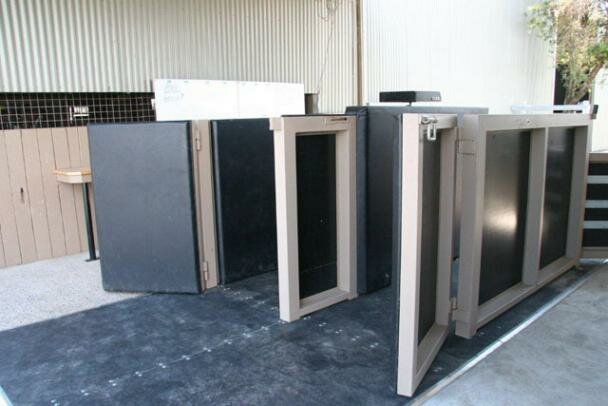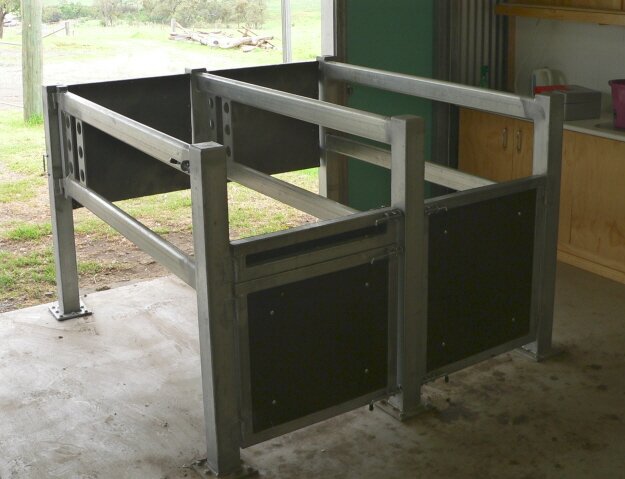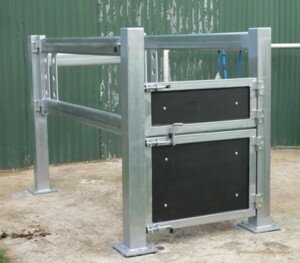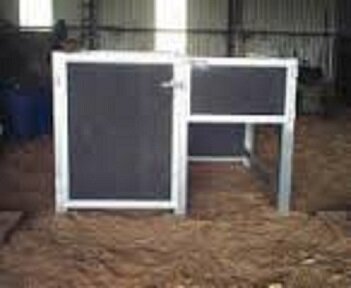Crush Design
A horse crush is a must for all property owners in order to allow safe and easy access to any horse that requires or home treatment or veterinary procedures. The design of the crush should ensure the complete protection of both the handler and the veterinarian whilst the horse is being treated.
With access to a well designed crush routine management practices can be performed quickly and efficiently. These include drenching, castration, vaccinations, dentistry, pregnancy testing and ultrasound scans and branding. A crush will also facilitate husbandry tasks like clipping & washing.
All reproductive examinations on mares, including ultrasound scans, should take place in a secure examination crush - you should never assume that any mare is safe to do a rectal examination on without being in a crush. Even the quietest, most tolerant mare can have a bad day or get bitten by a hornet.
Your veterinarian may not be able to perform rectal examinations if he or she feels at risk, as it is possible that even a mares mildest reaction may cost your veterinarian his / her life or at the very least his / her livelihood.
For some small breeders, or individual owners installing a crush may seem a relatively expensive process, however it will pay dividends in terms of convenience, piece of mind, and quality of the workmanship able to be performed.
Factors to consider before installing a crush.
There are a few simple rules-
- The crush should be safe and secure, and of suitable dimensions for the breed.
- The height of the rear gate should not be greater than 85cm. (Remember it will become higher as the mares dig out the floor. (This may occur if the floor is not cement.)
- The stocks should be built to be suitable for both left & right handed palpators.
- The crush should not be built against an existing wall. If you build against a right side wall, a left handed palpator has to stand directly behind the mare & vice versa. With difficult mares, it is important to be able to stand to one side initially.
- There should be a moveable bar or chain in front to keep the mare firmly back against the rear gate.(This bar will always have to be able to come further back than you would expect - so make sure there is plenty of room.)
- There should be somewhere safe to put the scanner; preferably at about shoulder height & where the screen is not in direct sunlight, however good lighting is essential for many other procedures such as wound suturing. The support for the scanner should not be part of the stocks - even the best built stock will move if a mare becomes agitated.
- There should be as anclosure adjacent / close to the mare to confine her foal so that the foal is safe and secure whille the mareis being examined.
- Power should be available to operate the ultrasound scanner & other veterinary equipment.
- Water should be accessible for disinfection purposes.
- The crush should have clear access from the rear, and preferably the front as well to allow for access to the horse's head for procedures such as endoscopic examinations, drenching
dental work.
Dimensions of a standard mare crush are listed below:
Height at sides: 1400 mm
Height of rear gate: 850 mm
Width: 800 - (700 mm internal)
Length: 1850 - (1800mm internal)
(These dimensions are for an thoroughbred mare, and will need to be adjusted for smaller mares or pony breeds. Alternatively, slots can be made along the side rails at the front to enable a bar to be placed in front of the chest.)
A safe design would incorporate full sides, with material such as cattle rail, sheet metal or mesh with a rubber conveyor on the insides for safety.
``````````````````````````````````````````````````````````````````````````
MARE EXAMINATION CRUSH / STOCKS
CRUSH DESIGNS
The crush design shown below is at the Avoca property where the Equivet recipient mares are kept and scanned prior to arrival at the Equine Breeding Centre for embryo transfer. These stocks work well for scanning multiple mares.







